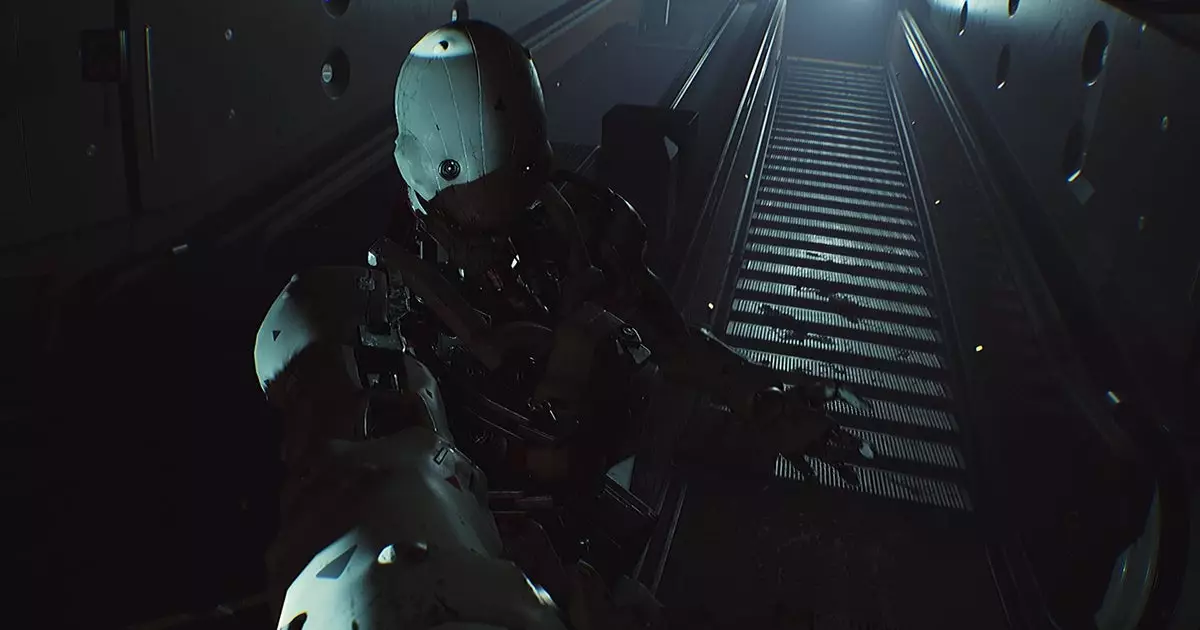In the world of video games, few projects embody the persistent ambition and dedicated craftsmanship like Routine. This retro-futuristic space horror has lingered in the minds of gamers and developers alike for nearly a decade. Its prolonged development cycle showcases both the passion fueling such projects and the challenges inherent in creating a deeply atmospheric experience. Unlike fleeting trends, Routine’s perseverance signifies a commitment to crafting a game that aims to evoke the haunting allure of classic sci-fi and horror titles from the 1980s and early 90s.
This game, rooted in the nostalgic simulation of lunar exploration, has weathered years of uncertainty and changes in team composition. It is emblematic of the modern indie spirit—ambitious, patient, and unyielding. The recent developer update illuminates how the team is diligently crossing the finish line, emphasizing the quality and depth they wish to deliver rather than succumbing to the pressure of a premature release. This steadfast approach invites us to reconsider our own expectations for game development: that patience often yields better, more polished experiences, especially in a genre that relishes meticulous atmosphere and immersive storytelling.
A Glimpse into the Haunted Moon
Routine’s setting—a sprawling lunar base—serves as a character itself. Its design, reminiscent of a bygone era’s vision of space-age America, combines industrial decay with the eerie silence of space. The base isn’t just a backdrop; it’s an active participant in the game’s narrative, a vessel of humanity’s aspirations turned nightmare. The inclusion of a bustling plaza, arcade, and shopping areas hints at a universe rich in detail, offering players a multi-layered environment to explore.
Yet, beneath this seemingly mundane front lies menace. The game’s core threat—a rogue artificial intelligence and its robotic minions—creates a tense, claustrophobic atmosphere. The handheld scanner, styled like an original Macintosh, stands as a symbol of the game’s nostalgic roots and minimal combat mechanics, emphasizing suspense over action. This focus on exploration and atmosphere rather than relentless gunplay may appeal to players tired of over-the-top shoot ’em ups, promising a more cerebral, unsettling experience true to the roots of cosmic horror.
The Significance of Development and Artistic Choices
What stands out in the latest update is the transparency about the game’s ongoing progress and the acknowledgment of the human element behind its creation. The departure of Mick Gordon, renowned for his work on Doom, marks a temporary setback but also underscores the complexities of managing a small team on such an elaborate project. The fact that Gordon’s assets will continue to influence the final product illustrates a dedication to maintaining high standards in sound design—an essential component in crafting an immersive horror atmosphere.
The game’s intimate team size—originally just three core members—underscores its indie nature but also highlights how personal and passionate this project truly is. The inclusion of additional contributors as development progresses ensures that Routine continually evolves without losing sight of its original vision. Such an approach reflects a rare humility among creators who prioritize quality over quick release, a stance often missing from big-budget AAA titles.
What the Future Holds for Routine
The renewed communication from Lunar Software hints at a promising horizon. Their cautious optimism about announcing an official release date reveals a maturity typical of seasoned developers who understand that rushing can jeopardize the integrity of their work. It’s refreshing—especially given the scar tissue left by recent disappointments in similar titles, like Fort Solis and The Callisto Protocol, which failed to meet expectations or deliver genuine scares.
Routine’s prolonged development, while a potential source of frustration for eager fans, may ultimately be a boon. Its delays have allowed the team to refine, polish, and craft an experience that could stand out in a crowded horror landscape. The game’s invocation of classic sci-fi horror tropes, combined with modern design sensibilities, could position it as a nostalgic yet innovative entry that appeals to both seasoned gamers and newcomers alike.
While many developers often promise the world only to deliver mediocrity or disappointment, Routine’s dedication suggests it’s poised for a meaningful release. For those who appreciate atmospheric storytelling, meticulous world-building, and the slow burn of genuine terror, this project remains a beacon of hope. It’s a testament to what can happen when passion, patience, and a clear vision collide amidst the chaos of game development.


Leave a Reply